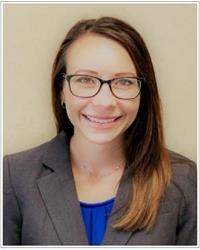In Minnesota, there are nearly 300 district court judges who preside over matters in ten judicial districts. While the Minnesota Rules of Court provide attorneys with significant information applicable to court proceedings, each judge may have his or her individual preferences with respect to motion practice and courtroom conduct.
In an effort to assist attorneys who may be appearing before a judge for the first time, the MSBA Civil Litigation Section Governing Council provided all district court judges with a brief survey. The responses that we received are organized on the right by judicial district and then alphabetically by judge’s name. We hope you find these responses to be helpful in your preparation for district court appearances.
For information about this project or to report an error in any judicial directory listing, contact Kara Haro, MSBA staff liaison to the Civil Litigation Section.
Tenth Judicial District Judges | Courtroom Preferences
Saterbak, Melissa
 Judge
Judge
Counties: Anoka
Contact with chambers:
- Set forth your preferred method to contact chambers (telephone, e-mail, etc.). Court Administration or Law Clerk
- To whom may attorneys direct scheduling/logistical questions? Court administration
- To whom may attorneys direct substantive questions? Law clerk
Motion practice:
- Set forth your practices and procedures for scheduling motion hearings. Contact court admin for a motion hearing date as they have access to my calendar preferences
- Identify any type of motion for which you do not require a hearing. Any default matter that does not require a hearing
- Do you accept telephone calls from attorneys to rule on discovery disputes that occur during depositions? Only in rare circumstances
- How much time do you allot for motion hearings? It depends on the case
- Set forth your practices and procedures with respect to attending a hearing by telephone or video conference. Need permission from the Court to do so as it is not preferred
- Set forth your practices and procedures with respect to discovery motions. Abide by the rules and file motions accordingly
- Set forth your practices and procedures with respect to stipulations of the parties, including stipulations for protective orders. In writing and signed by all parties and filed with the court
- Do you have particular requirements or procedures relating to requests to amend the scheduling order? Contact the Law Clerk
- Set forth your practices and procedures with respect to handling emergency motions. Contact court administration to schedule a hearing
Written submissions:
- Do you want to receive paper courtesy copies of the parties’ written submissions? If you do, set forth the number and preferred format of courtesy copies and identify any document type you do not want to receive. All motions/submissions should be e-filed at least 5 days in advance of a hearing. Bring courtesy copies of any submissions that are e-filed within 4 days of a hearing.
In-court proceedings:
- Set forth your practices and procedures with respect to attorney’s use of technology in the courtroom and during trial. Open to use of technology in the courtroom
Pretrial procedures:
- Describe your preferred procedures for pretrial settlement conferences, including the timing of such conferences, persons who must attend, whether persons may attend by telephone or video conference, and how you participate in settlement discussions. Settlement conferences should be scheduled accordingly and parties must appear in person.
- Set forth your practices and procedures for handling motions in limine. Motions in limine should be filed in advance of trial and a motion hearing held. The Court prefers to rule on motions in advance of the trial date.
Trial:
- Set forth your voir dire procedures. Standard practice/rules apply
- Identify your practices with respect to the use of technology in the courtroom during trial. Permitted if it will help the trier of the fact
- Set forth your practices and procedures with respect to marking and using exhibits. Will address on a case by case basis